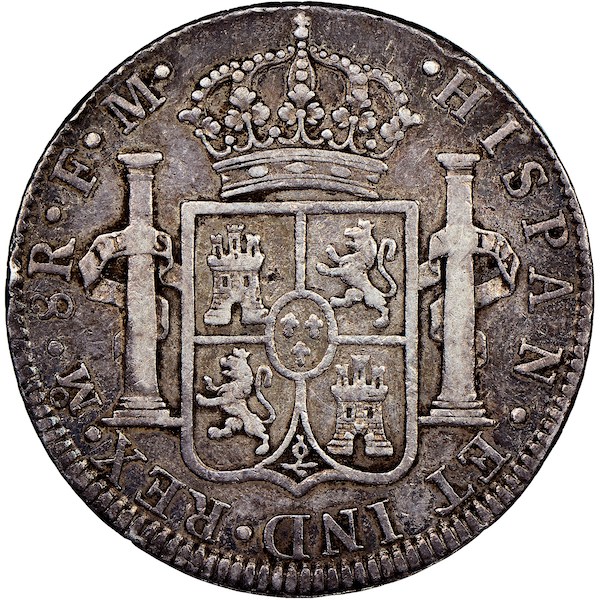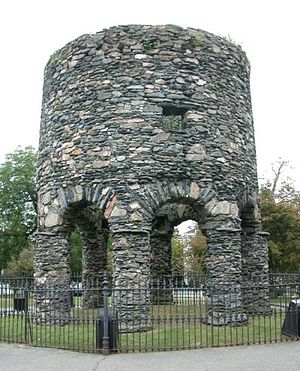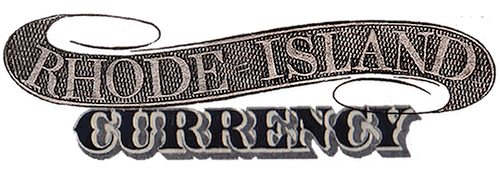Aquidneck Bank $1

July 10, 1856. Durand UNL, Haxby RI-140 G2a, Bowers RI-490-001-G010

A piece of eight, minted in Mexico City.
“Imprint of Wellstood, Hanks, Hay & Whiting, New York. Red protector ONE. Top center, Farmer and Indian support centered Rhode Island crest. Lower left, reverse of Spanish Colonial 8 Reales. Lower right, seated Liberty. Bottom, small vignette of stone Newport Tower. Rare bank and unlisted with no monogram. Interesting vignette of the controversial Newport Tower structure.”
Serial #627. Plate A. Signatures of Timothy Coggeshall, cashier, and Rufus B. Kinsley, president.
Similar to Durand 504, except for the red protector.
The silver coin depicted on this note and seen at right was a commonly accepted piece of currency in the United States during the first half of the 19th century. It was known as the Spanish dollar, or piece of eight and worth eight Spanish reales. According to Wikipedia, “It was widely used as the first international currency because of its uniformity in standard and milling characteristics. Some countries countersigned the Spanish dollar so it could be used as their local currency. The Spanish dollar was the coin upon which the original United States dollar was based, and it remained legal tender in the United States until the Coinage Act of 1857.”

The Newport Tower today.
Around the edge of the coin, it reads, “HISPAN • ET IND • REX • M • 8R • F • M,” which means “King of the Spains and the Indies, Mexico, 8 Reales.” The “M” means the coin was minted in Mexico City, while the “FM” are the initials of the coin’s assayer.
For Newporters, the small building between the cashier and president’s signature lines at the bottom of this banknote is a familiar image. It’s the Newport Tower, likely the base of a windmill built in the 17th century, which stands today in one of the city’s parks.
However, there was speculation in the 19th century (which continues in some bizarre corners of the internet) that the structure was of Viking origin and helps prove Norse contact with the area before Christopher Columbus.
Ex Stuyvesant Collection
